Travel News
Art & Culture In Italy’s Marche Region
A replica of the Greek statue, Victorious Youth, discovered by Fano fishermen, is at the end of Fano’s seawall promenade. - Photo credit: Bob Cooper
While most tourists visiting the Italian countryside head to Tuscany, a few smart travelers aim for the region next door.
It’s called Italy’s Marche region (or “Regione Marche” in Italian). It has a beautiful Adriatic coastline and an equally-rich artistic heritage.
In his two-part series on the region, Bob Cooper reports on art and culture in Marche.
Italy’s often overlooked Marche region, about the size of Portugal, doesn’t yet suffer the crowds of its neighbor, Tuscany.
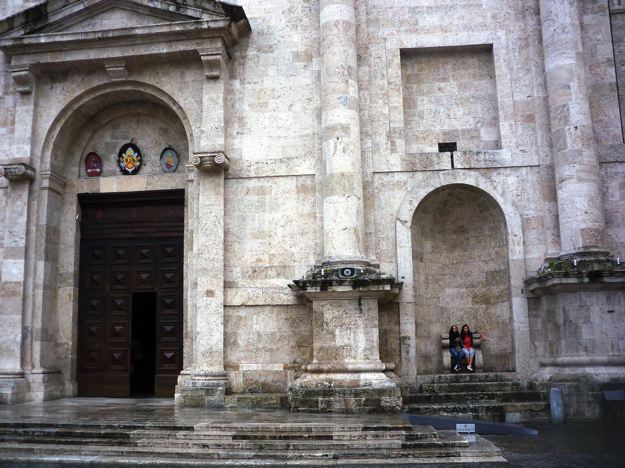
The Church of S. Francesco, built of travertine like most of the buildings in Ascoli Piceno’s Old Town, borders one end of the city’s People’s Square. - Photo Credit: Bob Cooper
Proof is seen in the price of accommodations, which start at a mere 30 Euros for a hotel or B&B room.
Marche’s coastal mountains, ranch lands, vineyards and beaches make it a central Italian version of the U.S. coastline north of San Francisco—except the villages are many centuries older.
This doesn’t mean you have to skip Florence, though Marche does offer the greatest density of museums and art galleries (400 in 239 towns) in Italy. There is also architecture, antiquities and artistic landmarks from the Roman, Medieval, and Renaissance eras.
Ascoli Piceno, a two and a half hour drive from Rome, is called “the town of marble,” but the fortress-like old town—crowned by 50 towers—is actually built of travertine, a marble-like stone still visible in the surrounding cliffs.
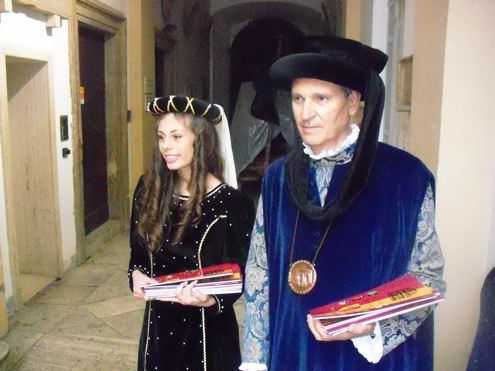
Ascoli Piceno residents greet visitors to its museum. - Photo Credit: Bob Cooper
The Renaissance art and architecture is impressive.
The biggest crowds come for the Quintana festival in August, when 1,400 Italians in Renaissance attire march in a parade, followed by jousting. Yes, jousting!
The town’s history is celebrated in quieter ways, too.
During my visit, a local dance troupe rehearsed on the stage of the Ventidio Basso, a neoclassical theater honeycombed with five tiers of boxes once reserved for the town’s families.
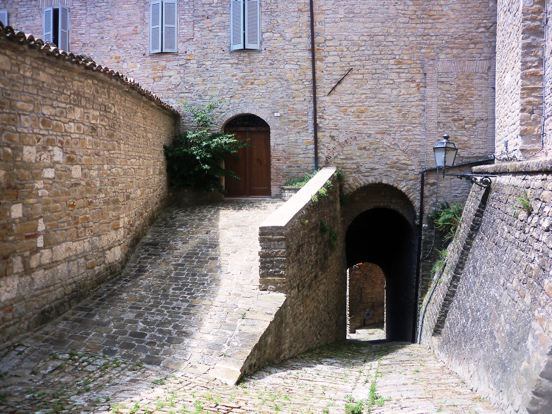
Brick passageways form a maze in the medieval borough of Serra San Quirico. - Photo Credit: Bob Cooper
Smaller but just as intriguing is another fortress-like town to the north: the medieval hilltop borough of Serra San Quirico. Cobblestone paths and alleys wind past small, stone-and-brick apartments, where many senior residents look as if they’ve never left.
There are two churches, one of them a high Baroque beauty filled with frescoes, golf-leaf statues and a 1675 organ.
Romanesque high walls and turrets once used for defense against invaders tower above, with clotheslines cast between windows like fishing lines. Surrounding the town are fig orchards, sheep-covered hills and a forest still crawling with wolves.
The town comes alive in July with the Pinocchio-inspired Toyland festival, and in December, when 100 nativity scenes come to life.
The Christmas spirit is alive and well in Italy. Don’t miss: Cool Ways To Celebrate Christmas In Italy
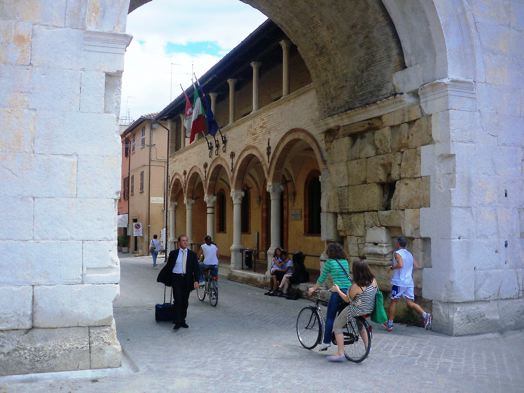
A triumphal arch built in 2 A.D. lets you through Fano’s Roman wall. - Photo credit: Bob Cooper
Farther north on the Adriatic Riviera is Fano, encircled by the longest Roman wall still standing outside Rome. It’s an exhilarating walking town, with a colorful outdoor market, a harbor, a popular beach, a castle, a 12th-Century cathedral, and a museum at the wall’s triumphal arch that was built in 2 A.D.
One day the museum may display the coveted Victorious Youth, now displayed in the Getty Museum in Los Angeles, once an international dispute over the bronze statue’s ownerships is settled. (In 1964, Fano fishermen hauled in the 2,300-year-old statue—presumably lost in a shipwreck—before it was hidden, sold and smuggled out of Italy.) For now, you can admire a replica at the end of Fano’s long seawall promenade, which is also a lovely stroll.
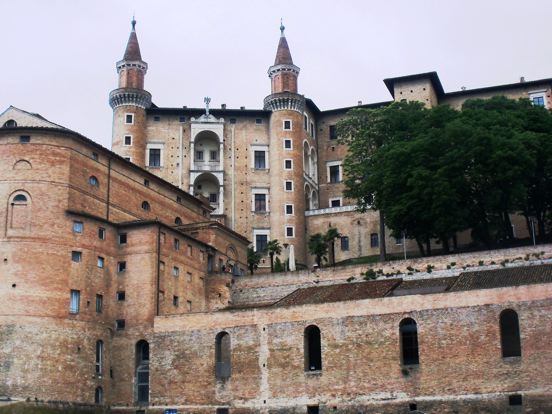
The city of Urbino, UNESCO World Heritage site, is dominated by this fortress. - Photo credit: Bob Cooper
In the hills southwest of the Adriatic towns of Fano and neighboring Pesaro—Marche’s largest city (pop. 102,000) and another hub of culture—is Urbino.
A UNESCO World Heritage site where slabs of Roman roads and aqueducts are visible through glass in one museum, Urbino is best known for its native son, Raphael. The master’s paintings highlight an impressive Renaissance collection in the National Gallery of the Marche in Urbino’s Ducal Palace.
Displayed in the adjacent old city hall are books, coins and coats of arms from the 1400s. Amid these treasures is a town alive with outdoor restaurants and cafes, where local teens buzz around on motor scooters, oblivious the history around them.
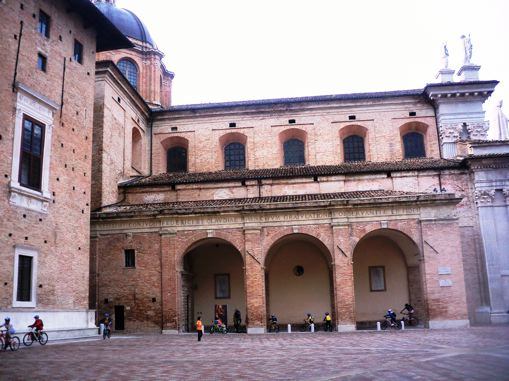
Never mind that it’s an historic plaza; these kids regard it as a good place to ride their bikes in the heart of Urbino. - Photo credit: Bob Cooper
If you tire of the art museums, there are 200 Romanesque churches and 106 castles to see, as well as theatre to attend. Every town of any size has its own theater, where plays, concerts and opera are performed. Rossini operas are especially favored as he was born in Pesaro, where the Rossini Opera Festival in August fills two large theaters.
You should also expect live music in restaurants each weekend, especially accordionists, because Marche is the region where 200,000 accordions were crafted and exported to America during the accordion craze of the Fifties.
Marche poet Giacomo Leopardi’s celebrated poem “The Infinite” begins: “These solitary hills have always been dear to me.” With Marche tourism increasing 21 percent in 2010, they are a little less solitary today. So now is the moment to visit to this culturally rich region.
Text and photos by Bob Cooper for PeterGreenberg.com. Bob Cooper (www.bob-cooper.com) has written for Continental, away.com and many other travel magazines and websites.
Related Links on PeterGreenberg.com:












